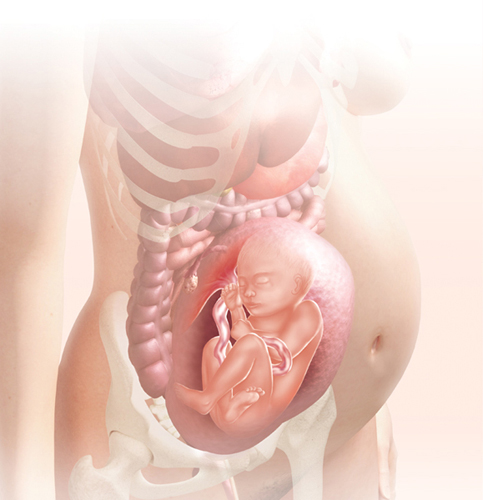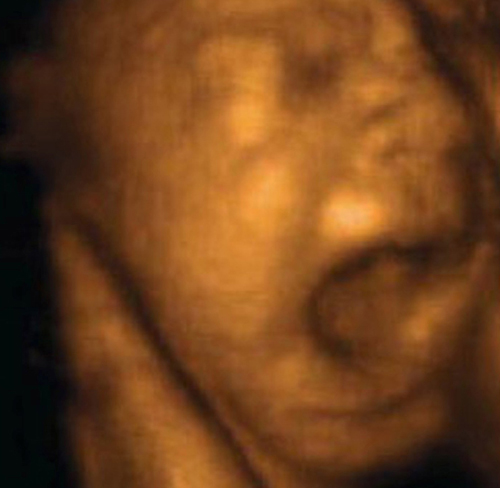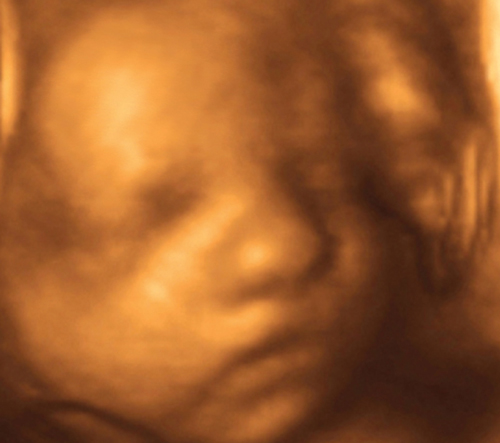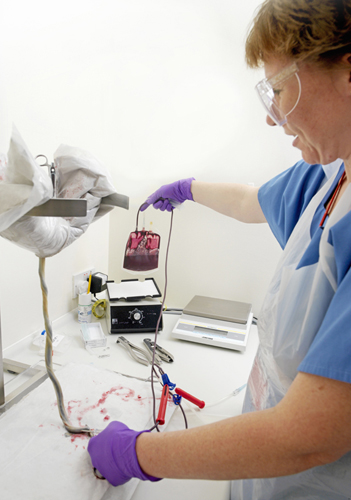Your 31st Week
You may have firm
thoughts about what you consider to be the ideal birth experience.
However, keep an open mind because many factors can influence where and
how your baby is born. There’s nothing unusual in a woman changing her
mind, even after her labor has actually started. Your health-care team
will expect you to ask a lot of questions about childbirth, so take
advantage of their experience and expertise.
NOTE
Even if you have a birth plan in mind, be prepared to be flexible

You are 30 Weeks and 1 Day 69 days to go…
It’s well worth giving some thought to where your baby is going to sleep before you actually bring him home from the hospital.
Your baby today
From this point in the pregnancy your baby will yawn just as
often as during the first few weeks after birth. Exactly why babies yawn
before birth remains unknown, but seeing your baby yawn on a scan is
quite likely to make you yawn as well.

It’s recommended that your baby sleeps in a crib in your bedroom for the first six months. See the Should you co-sleep?,
if you’re considering co-sleeping. With your baby in your bedroom,
you’ll be close by when he cries at night and able to attend to him
easily. This is especially useful if you’re breast-feeding.
Remember that
babies are not necessarily quiet sleepers: they may wiggle, grunt, and
move around and these noises may disturb you or your partner. If your
partner has to go to work the following day this extra disturbance may
affect him. It will affect you, too, but you may have a chance to “catch
up” on some sleep, or at least rest, when your baby naps. You should do
what is best for all three of you, even if that means your partner
spends some nights in the spare room. Some new parents find that they
are so exhausted by life with a newborn that they sleep, regardless of
whether their baby is snuffling or not.
If the baby is in his own
room you may worry that you may not hear him cry, but you will if you
use a baby monitor. When he does cry, yet again at 3 am, be aware that a
short trip along the landing can seem like a mile.
Should you co-sleep?
You may want to put your baby into your bed with you,
and yet you may be concerned that you might roll over on him. For this
reason, the American Academy of Pediatrics does not recommend
co-sleeping. It can be especially dangerous if either of you smoke or
use alcohol or drugs that make it hard to wake up, or if you sleep with
the baby on a waterbed, couch, or in a chair. The safest place for your
baby is in a bassinet near your bed.
… Your body
Breast changes
In the third trimester,
your breasts will begin to prepare themselves for feeding your baby,
and you may experience some discomfort and changes that you had not
anticipated. Your breasts will become fuller, and may actually feel very
heavy; your areolas (the area around your nipples) will become darker,
and you may feel lumps and bumps in your breasts, as the first milk,
colostrum, begins to be produced. This may leak out a little (see On leakages).
The small glands on
the surface of your areolas (known as Montgomery’s tubercles) will also
become raised bumps. You may have darkened veins along your breasts,
due to their increased blood supply. Your breasts may also feel more
tender and sensitive than usual, especially if touched.
Your breasts will change
in preparation for breast-feeding, whether you intend to breast-feed
your baby or not. Since your breasts will feel full and heavy by this
stage, it’s important to wear a bra that properly supports you. Go for a
fitting if necessary.
You are 30 Weeks and 2 Days 68 days to go…
Your baby has now developed a clear rhythm of sleeping and waking that may mimic your own or be personal to him.
Your baby today
You will be aware of times when your baby is especially active
and times when he is more quiet. There is still a lot of space for your
baby to move within the uterus but it is likely that there will be a
favorite spot that receives more kicks than any other.

Exactly when and how
your baby develops a cycle of sleeping and waking before birth remains a
bit of a mystery. It’s not known whether your own rhythms influence
your baby’s sleep–wake cycle or whether your baby develops his own
internal clock. Indeed, such a clock might be triggered in response to
the small amount of light that is able to penetrate through the uterus
during the last few weeks of pregnancy. It’s apparent from brain scans,
however, that by this stage of pregnancy, your baby does have very
separate periods of activity.
There is a clear
cycle, alternating between periods of quiet rest, sleep with rapid eye
movements (REM), wakefulness with activity but no eye movement, and
wakefulness with lots of activity and eye movements. During this
sleep–wake cycle, the baby’s actions becomes more coordinated as periods
of activity are linked to rhythmical breathing and increased heart
rate, and eye movements.
By this stage of
pregnancy, electrical activity in your baby’s brain shows patterns
reflecting periods of sleep or wakefulness. An EEG of your baby’s brain
would show that the quietest period, deep sleep, takes up almost half of
the time. The next most common state is REM sleep (the sleep stage
during which children and adults dream). This is a time of great
electrical activity within your baby’s brain. During REM sleep the baby
may be quiet or making lots of movements, so it’s not possible to tell
whether your baby is truly awake at this time or if he’s dreaming.
Paradoxically, the least electrical activity happens when your baby is
most awake—in fact less than 10 percent of your baby’s time is spent
truly awake at this stage.
Stem cell collection
The blood in your baby’s umbilical cord
contains “cord blood,” which is rich in stem cells. These cells are the
building blocks of organ tissue, blood, and the immune system. Some
parents save these cells and store them (in a private facility at a
cost) in the event that their child or another family member needs their
healing benefits (see Stem cell collection).
Studies have found
that they are very effective in the treatment of more than 70 diseases
including juvenile diabetes, cancers, heart disease, and brain injury.
Stem cells are widely
used, but there is significant evidence to show that using cells from
the cord blood of a sibling or other family member is more effective
than using cells from an unrelated donor, or bone marrow from relatives.
Cord blood can be
expensive to store. Some women choose to donate their blood to public
cord blood banks. The donated blood is stored, and this is used to treat
patients who need it most. Talk to your doctor if you’d like to do
this.
Stem cell collection from your baby’s umbilical cord is easy and pain-free, and could have life-saving benefits for your children.
